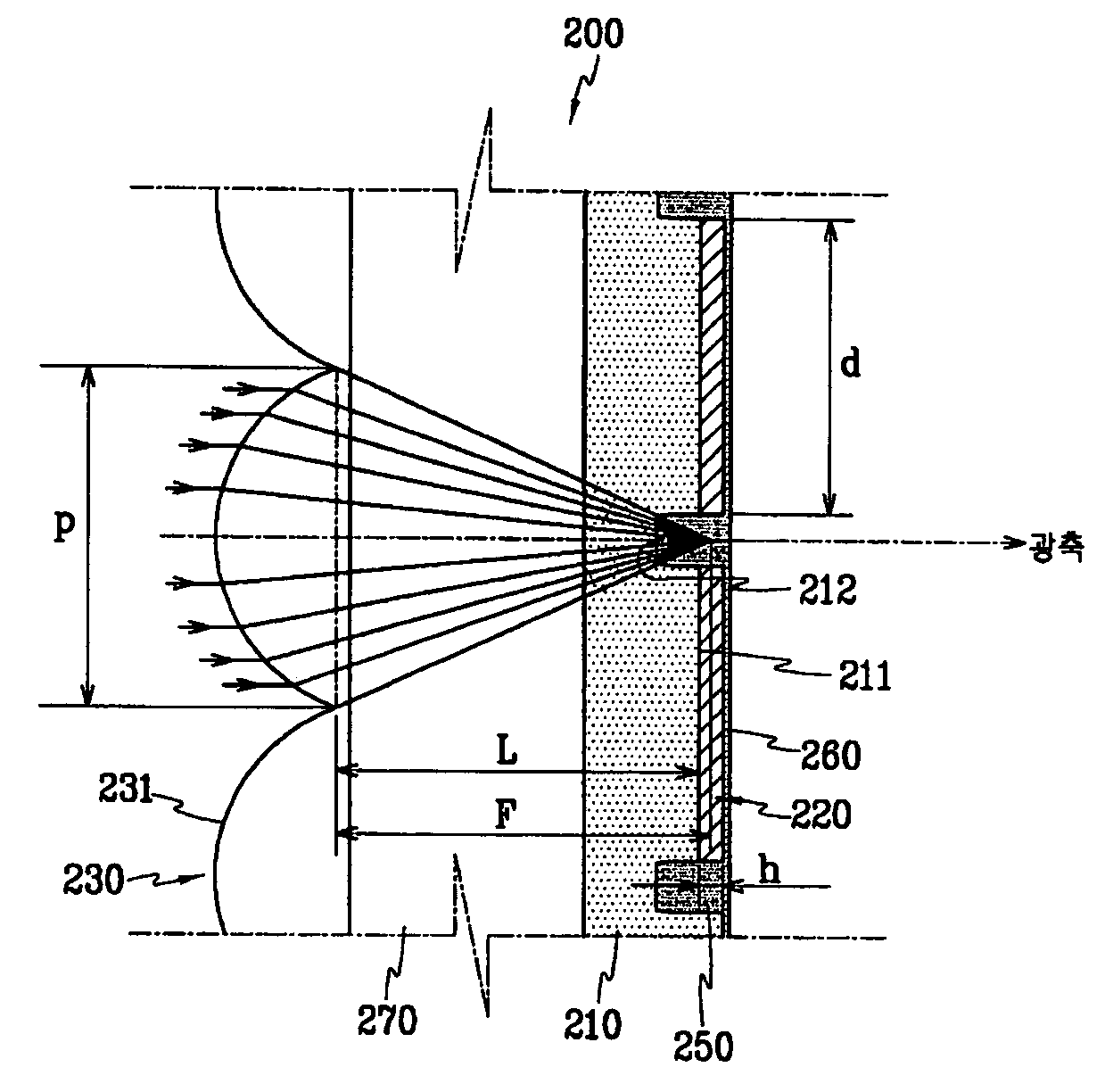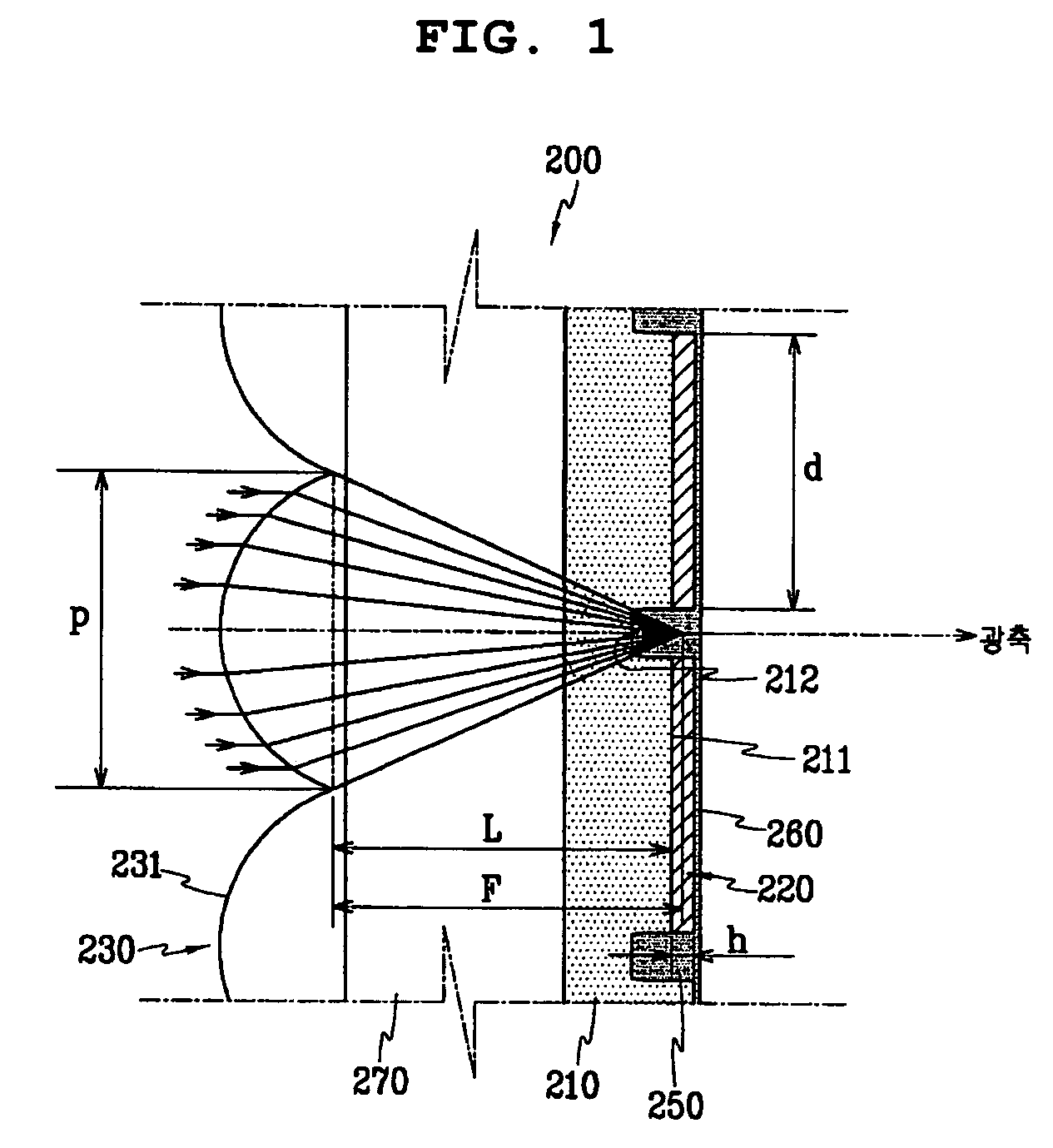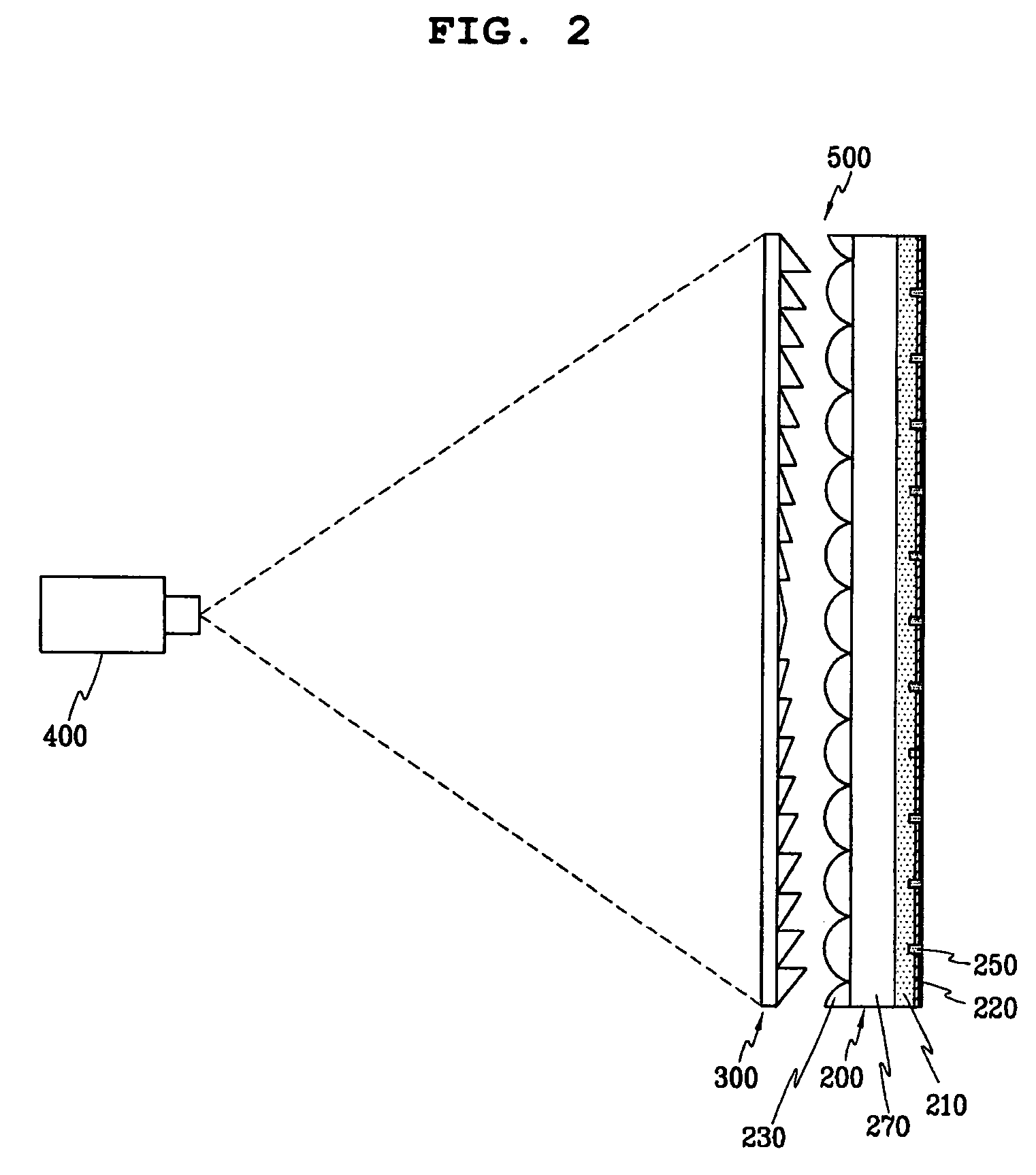Lenticular sheet and transmission type screen using the same
a transmission type screen and lenticular sheet technology, applied in the field of lenticular sheet, can solve the problems of increasing the time and cost needed for the manufacture of lenticular sheets compared to other conventional processes, unable to obtain light-absorbing layers having a sufficient area, and not being able to meet the requirements of lenticular sheets for md, etc., to achieve the effect of sufficient tolerance and improved moldability and workability
- Summary
- Abstract
- Description
- Claims
- Application Information
AI Technical Summary
Benefits of technology
Problems solved by technology
Method used
Image
Examples
Embodiment Construction
[0040]Hereinafter, the lenticular sheet, manufacturing method thereof and transmission type screen according to the present invention will be described in detail referring to the accompanying drawings, and thus a person skilled in the art may be able to carry out the present invention.
[0041]Referring to FIG. 1, the lenticular sheet according to a preferred embodiment of the present invention will be explained hereinafter.
[0042]The lenticular sheet 200 is provided with a cylindrical lenticular lens array 230 facing to the input surface on a transparent substrate 270. Each cylindrical lenticular lens 231 forming the lenticular lens array 230 has a size (width) corresponding to the size of the minimum pixel that can be displayed by a projection TV. In the case of a lenticular lens for microdisplay, it has a width P of between several hundreds and several tens micrometers. The lenticular lens that may be used in the present invention includes a lenticular lens formed by using acrylic re...
PUM
 Login to View More
Login to View More Abstract
Description
Claims
Application Information
 Login to View More
Login to View More - R&D
- Intellectual Property
- Life Sciences
- Materials
- Tech Scout
- Unparalleled Data Quality
- Higher Quality Content
- 60% Fewer Hallucinations
Browse by: Latest US Patents, China's latest patents, Technical Efficacy Thesaurus, Application Domain, Technology Topic, Popular Technical Reports.
© 2025 PatSnap. All rights reserved.Legal|Privacy policy|Modern Slavery Act Transparency Statement|Sitemap|About US| Contact US: help@patsnap.com



